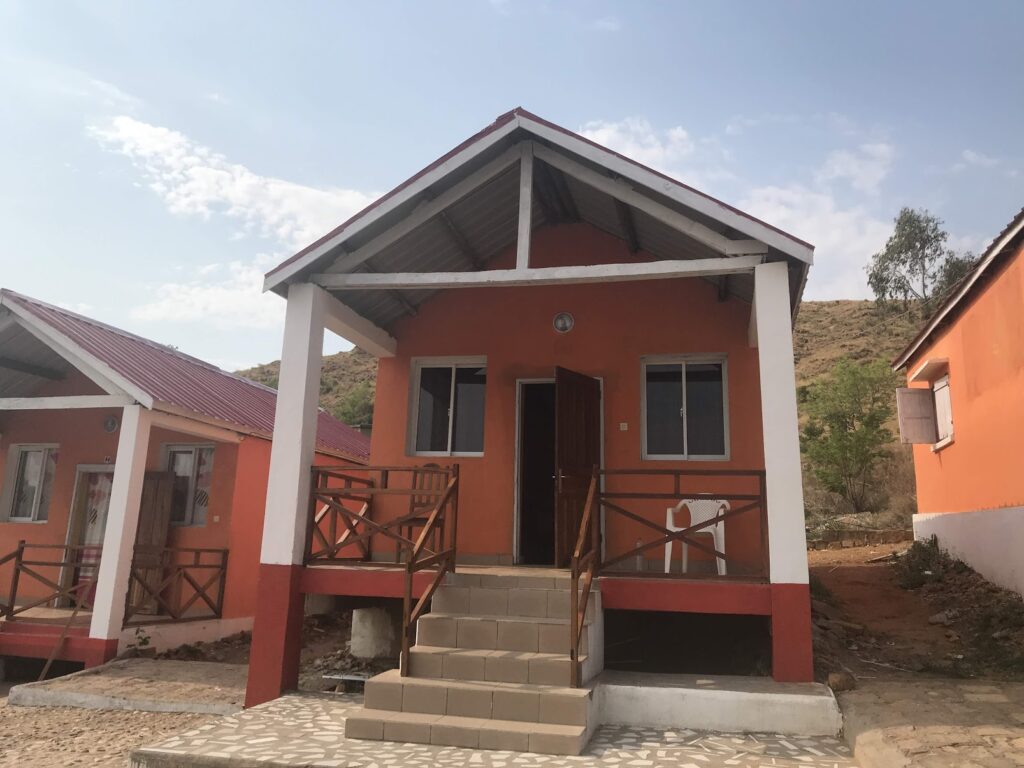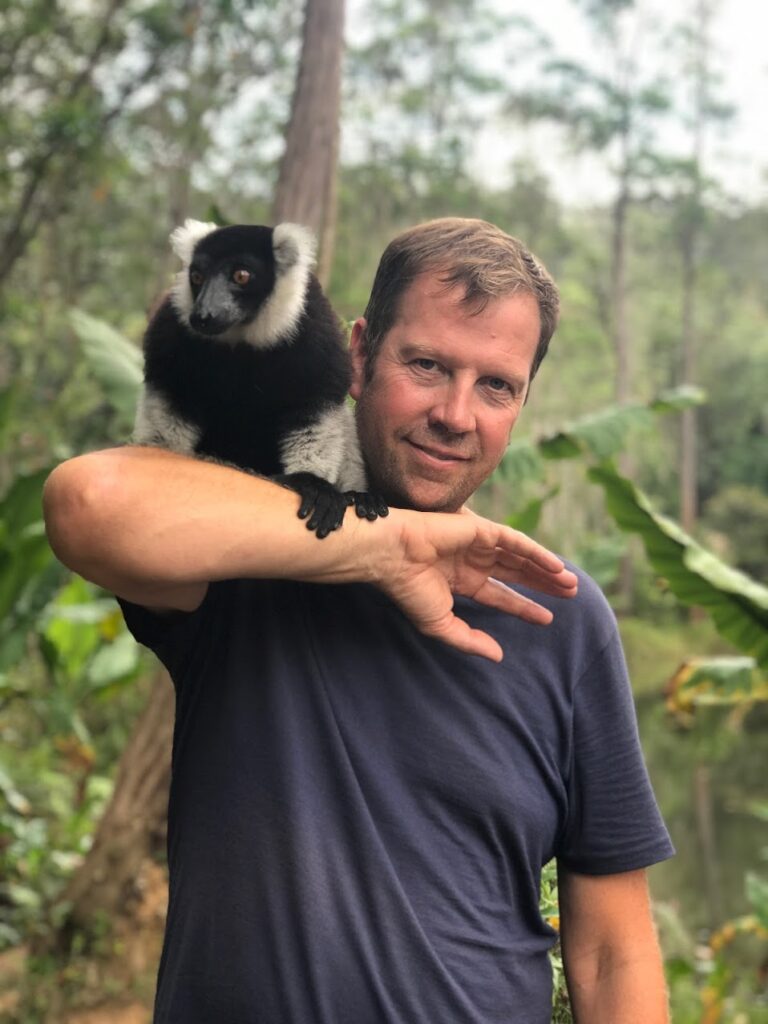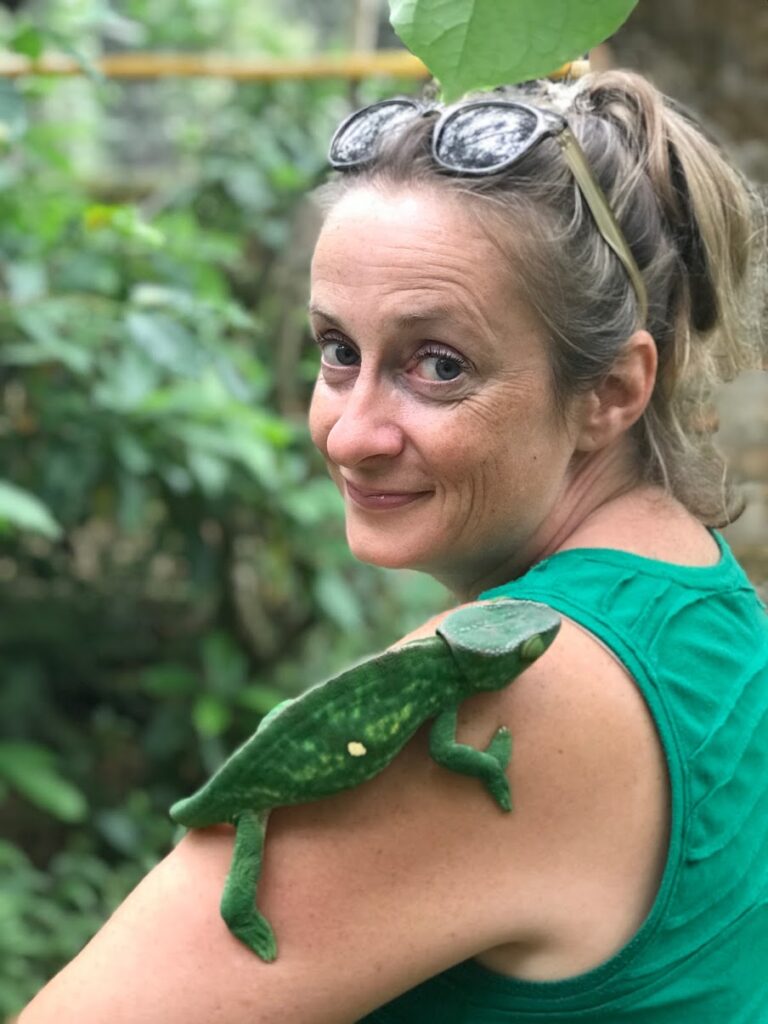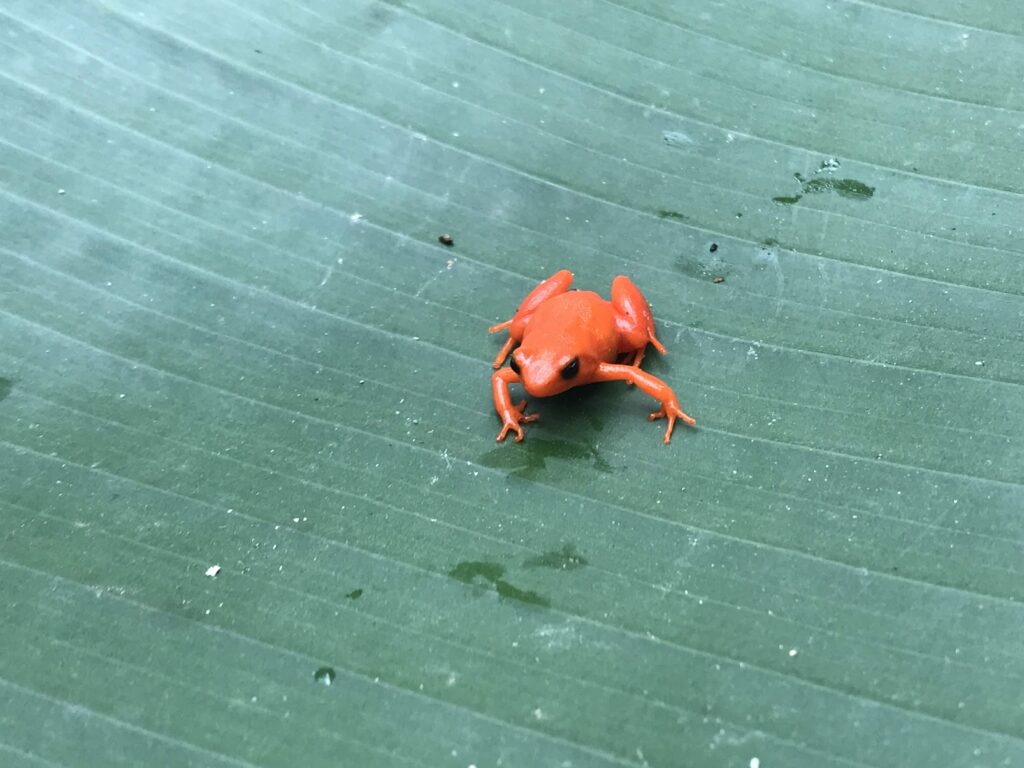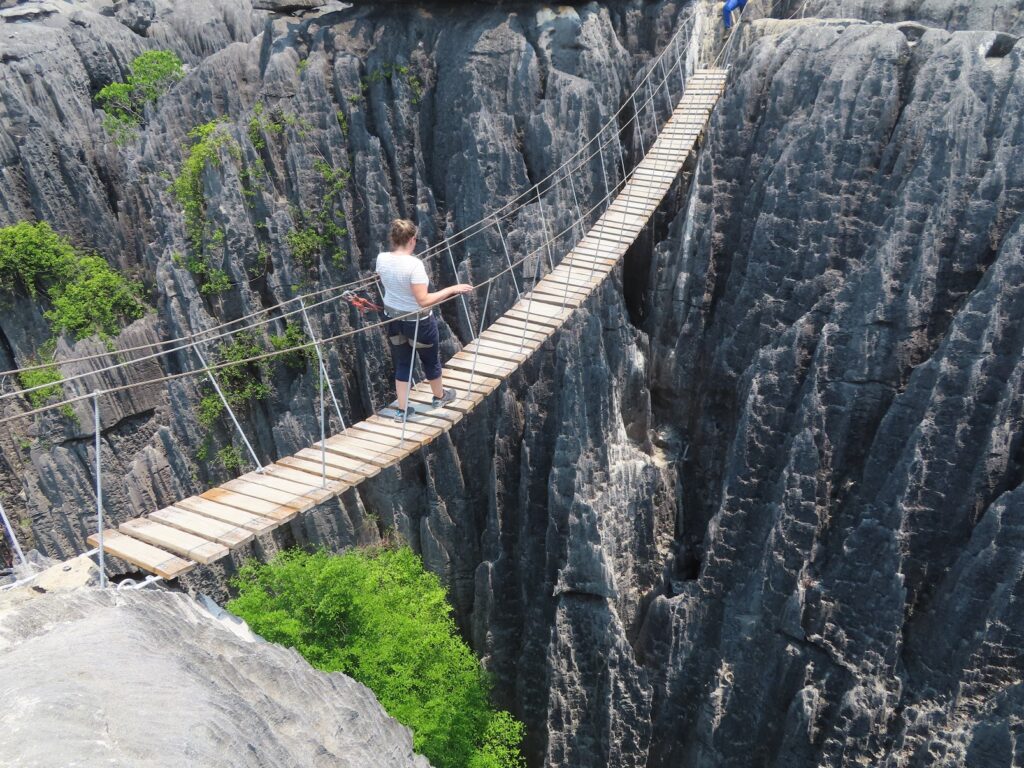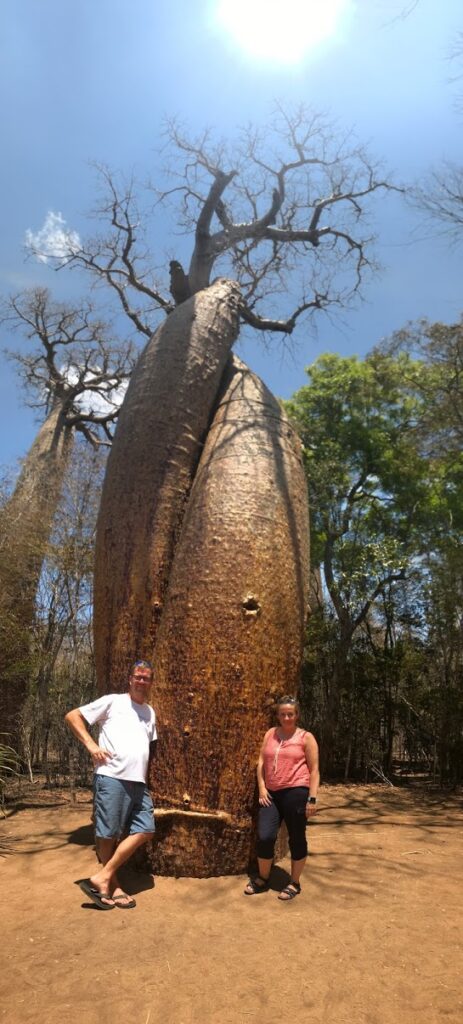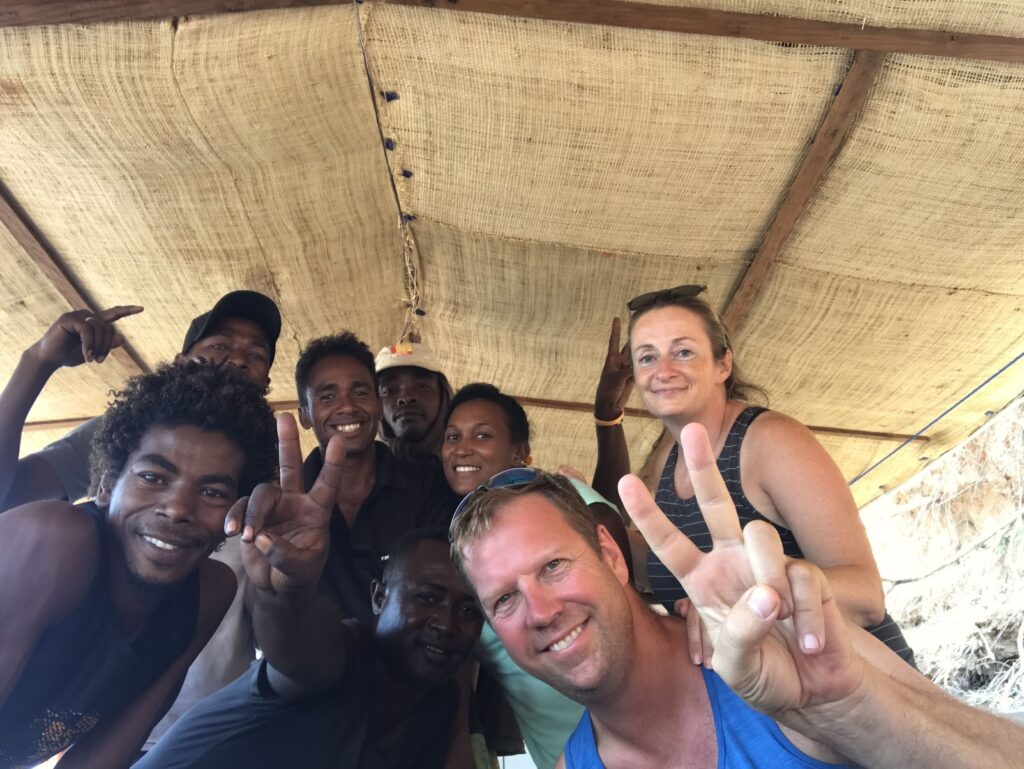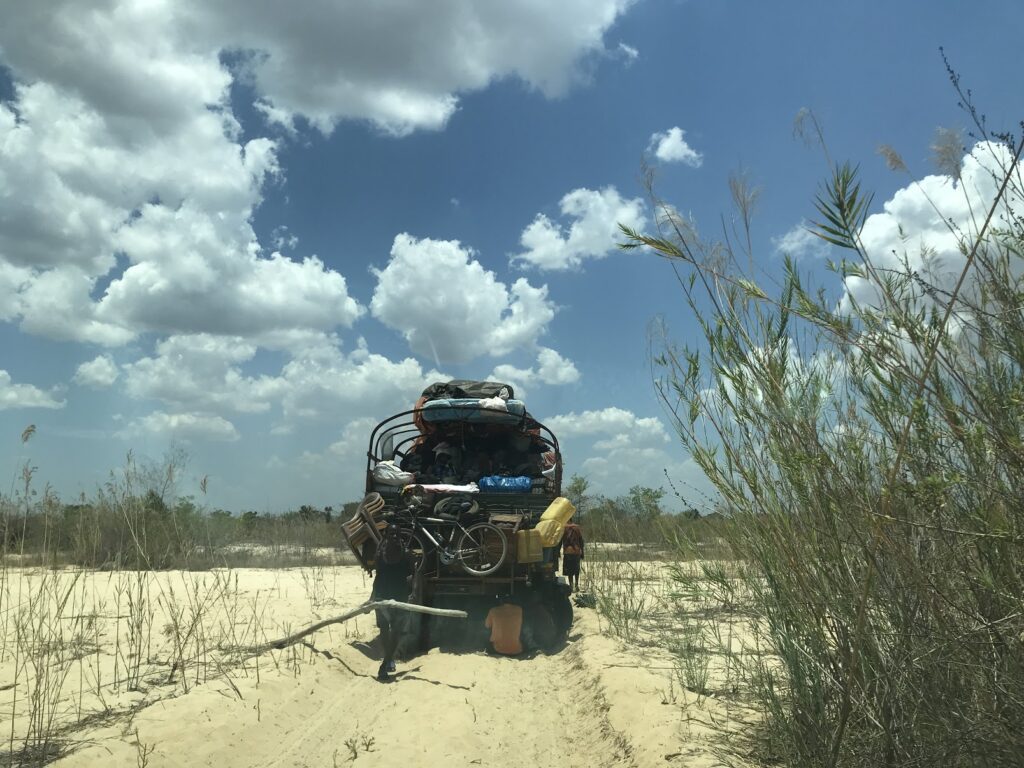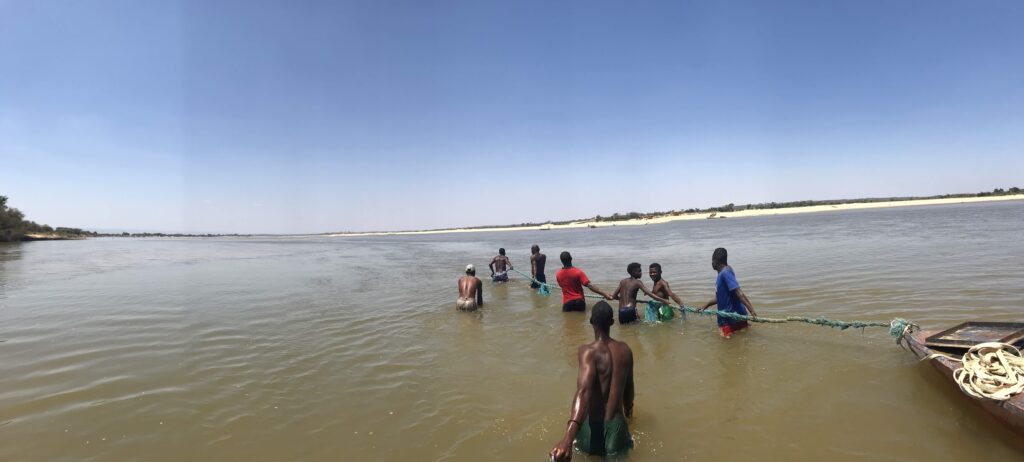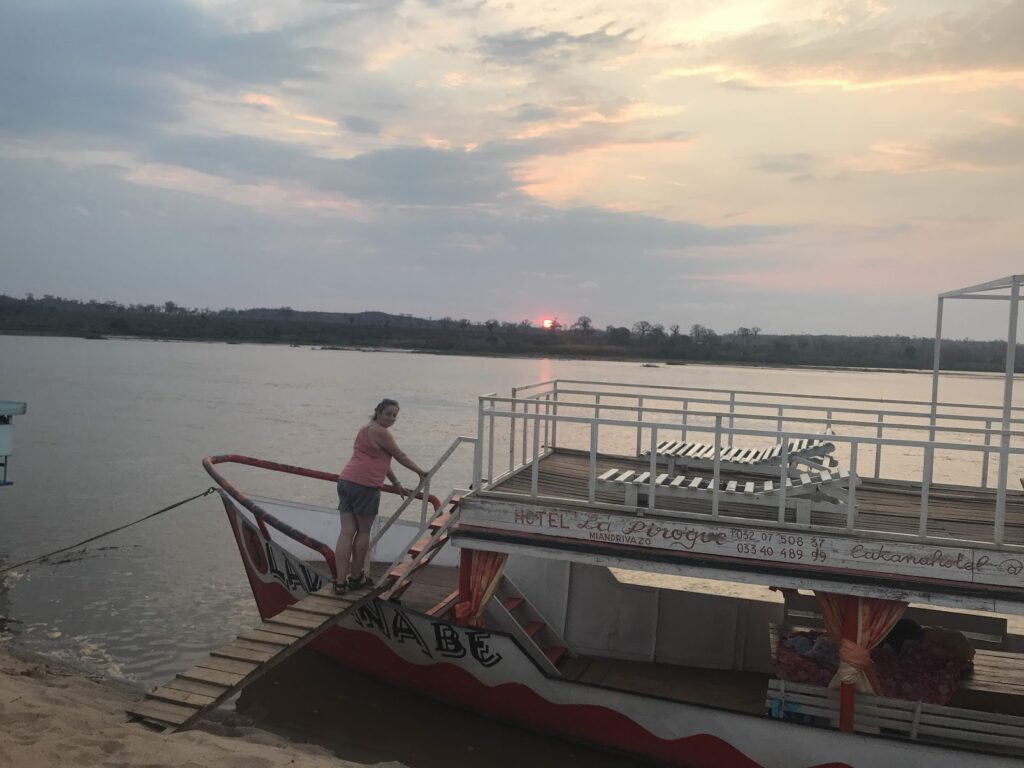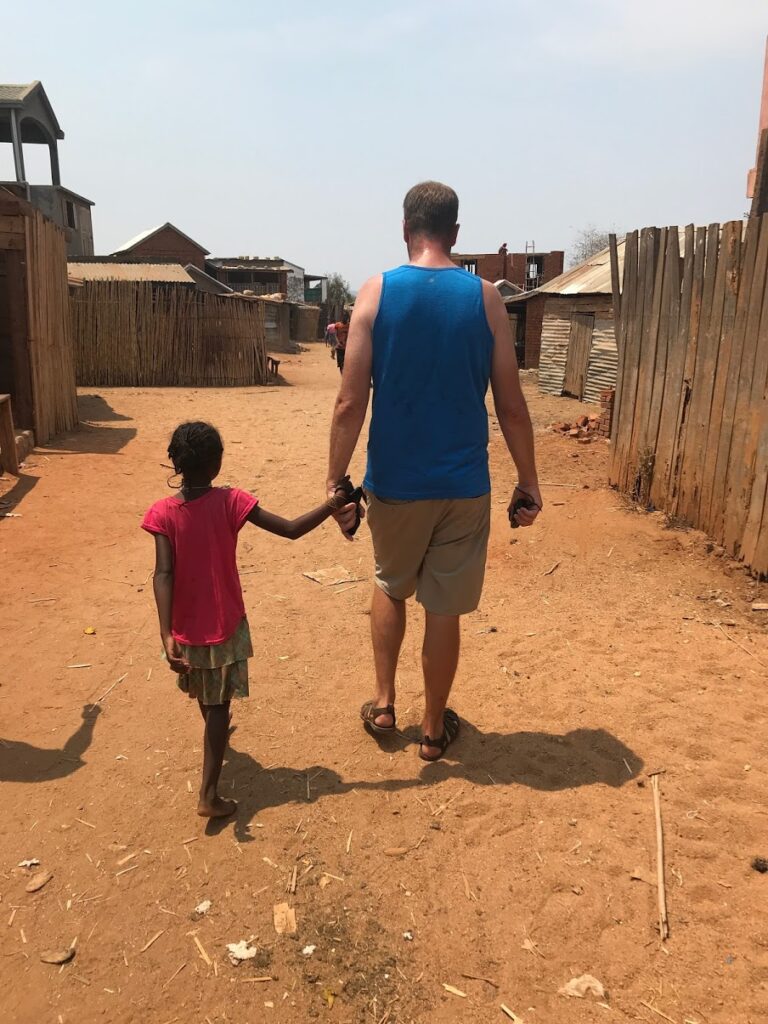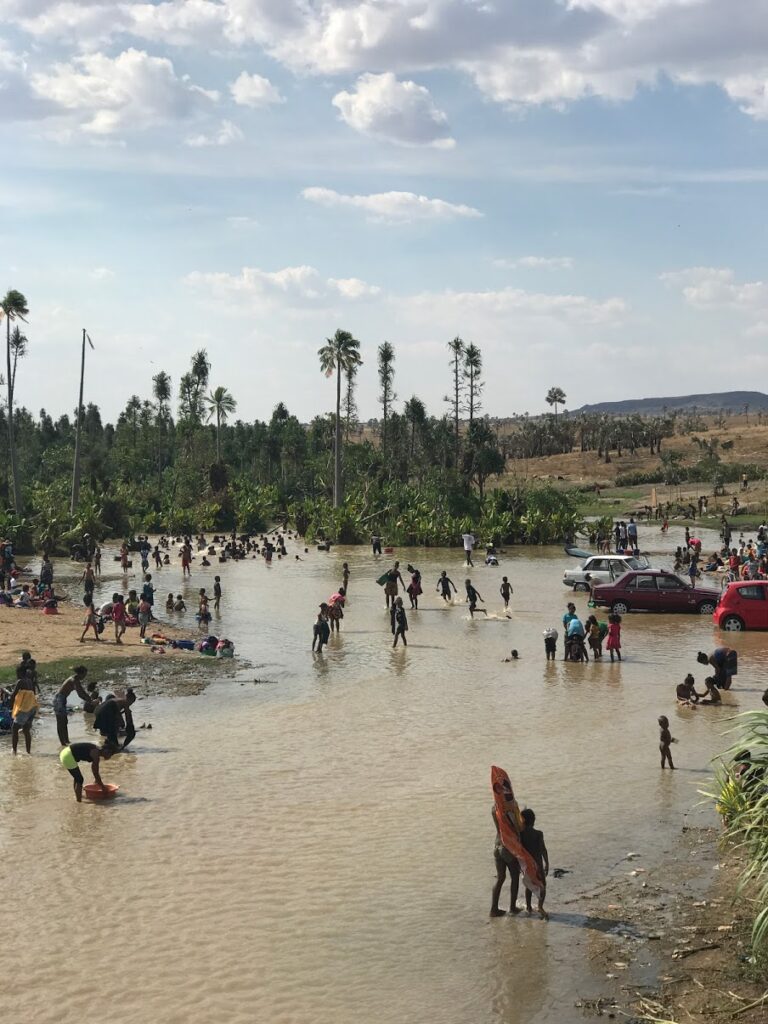I suppose for starters I should say that visiting Madagascar is not for everyone. First of all, we could not comment on 4 or 5 star travel in Madagascar. If that is your travel style, then you might want to look for other blogs that focus more on that. However, if your style of travel is anything like ours, then this post might be helpful for you. We have had Madagascar on our list for a long time and getting there was a major part of our planning for our year of travel. This post is also about some things you should know when planning your trip. If you want more highlights of our trip, click here for that post.
What you should know about planning your trip:
How to get around?
There are some different choices for travelling around Madagascar. We chose to hire a tour company after a lot of research. Just to note, it is not a cheap option. It was about €100 each per day. That doesn’t include getting to Madagascar. It included the car, driver, gas, accommodations (mid-level), breakfast, Tsiribinha River boat trip (also lunch and dinner, plus crew), and airport pick up. Lunches and dinner (except on the boat trip) were our own expense. If you choose full board (lunch and dinner), you should know that you are basically paying for a full menu for every meal in the hotel where you are staying. If you are like us, you would rarely eat a three course meal and certainly not every day for lunch and dinner. Selecting only B&B will allow you to pick where you eat and how much you eat. Your driver can help you pick some good places that are safe for you to eat at.
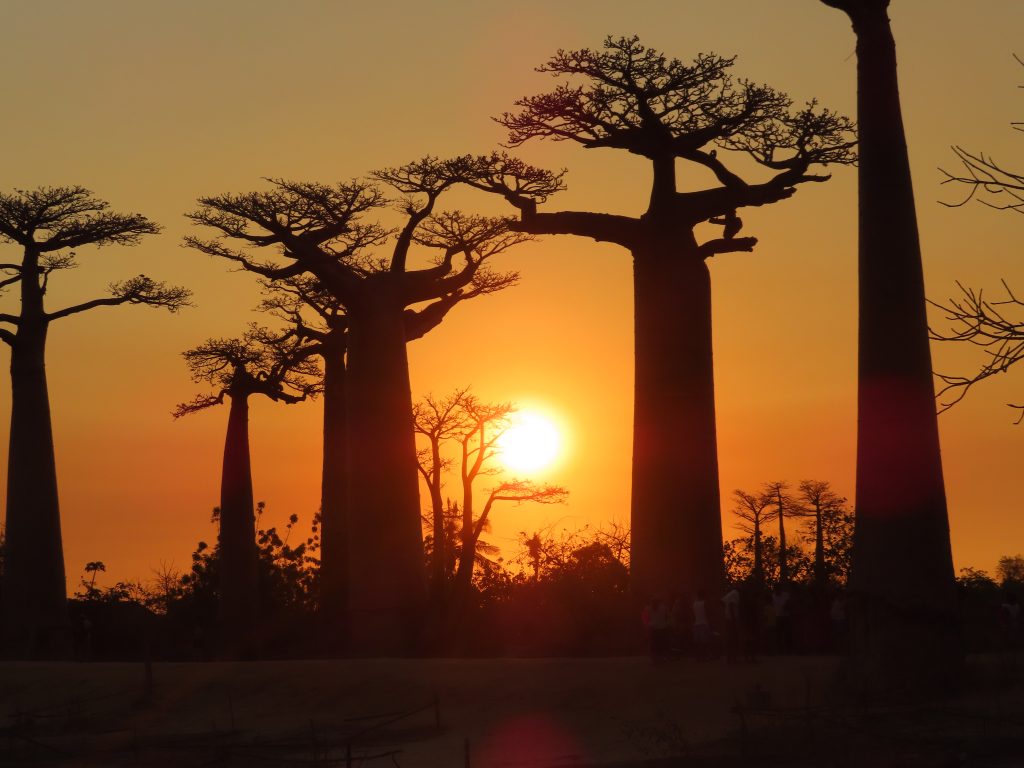
Another option would be to do this without a car and driver. We met a couple who was doing it this way. We also spoke with a couple of people who had travelled this way. In my opinion, if you choose to travel this way, you should probably have a lot more time or should choose to see fewer things. Local busses do not operate every day to some of the more remote areas and it is possible for you to get stuck somewhere for a few days. The one couple we met paid a truck driver to sit on rice sacks in the back of the truck. They did not realize it but the truck driver pulled over on the side of the road and they had to sleep on the rice sacks. There were also a lot of people sharing the back of the truck. The ride which took us about 8 hours down a road that required an army escort (there were some hijackings a few years ago, generally safe now), took them about 18 hours or longer. Then when they were at Big Tsingy they could not actually get to Big Tsingy… you need a car, driver and guide to get there. They had to try to get a ride back by asking every car. Had we not given them a ride that day they would not have gotten back that day. So, you can see that you need to build more time in for the difficult travels when you are winging it that way.
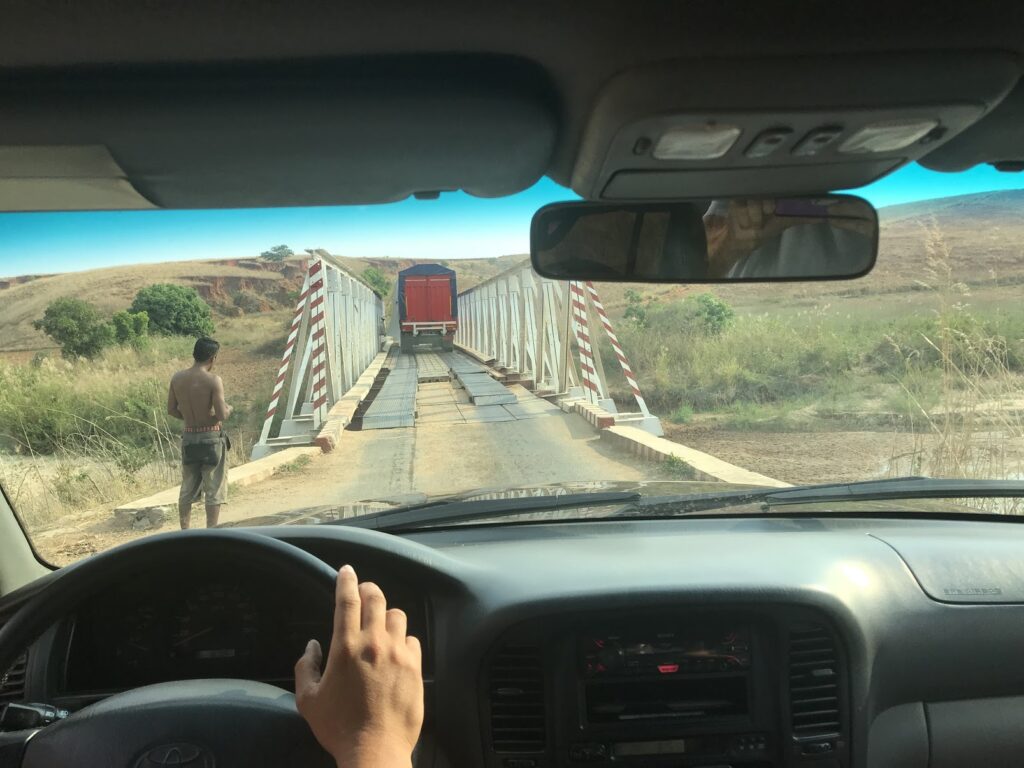
Another option is to just pay for a car rental. Car rentals come with a driver. There is only one company that will actually let you drive your own car. And at that you can only go on the paved roads. Only 15% of the roads in Madagascar are paved. A car and driver can cost between €55 to €75 per day for a vehicle that can go on the unpaved roads. This also includes your gas. Your driver will function like your guide and help you select places to stay. The driver will stay in a dorm room at your hotel and will get a meal of rice and something from the places you eat. So, your car rental includes everything except your accommodations and your meals. This is a much cheaper way to do it than we did. I suspect if we go back then we will do it this way. The only risk is the possibility of not getting a good place to stay during high season. Our tour company had to change where we would stay a couple of times because they were fully booked.
You could book your own places but not all places are online. We did not do our own research on hotels in Madagascar. We normally do this but as we were booking this tour we did not bother. I did a bit of a research on places that we stayed and the prices were between $20 and $40 per night (CAD). This doesn’t include breakfast which is probably about $5 per person. This is for an American breakfast which basically means add an egg to the meal.
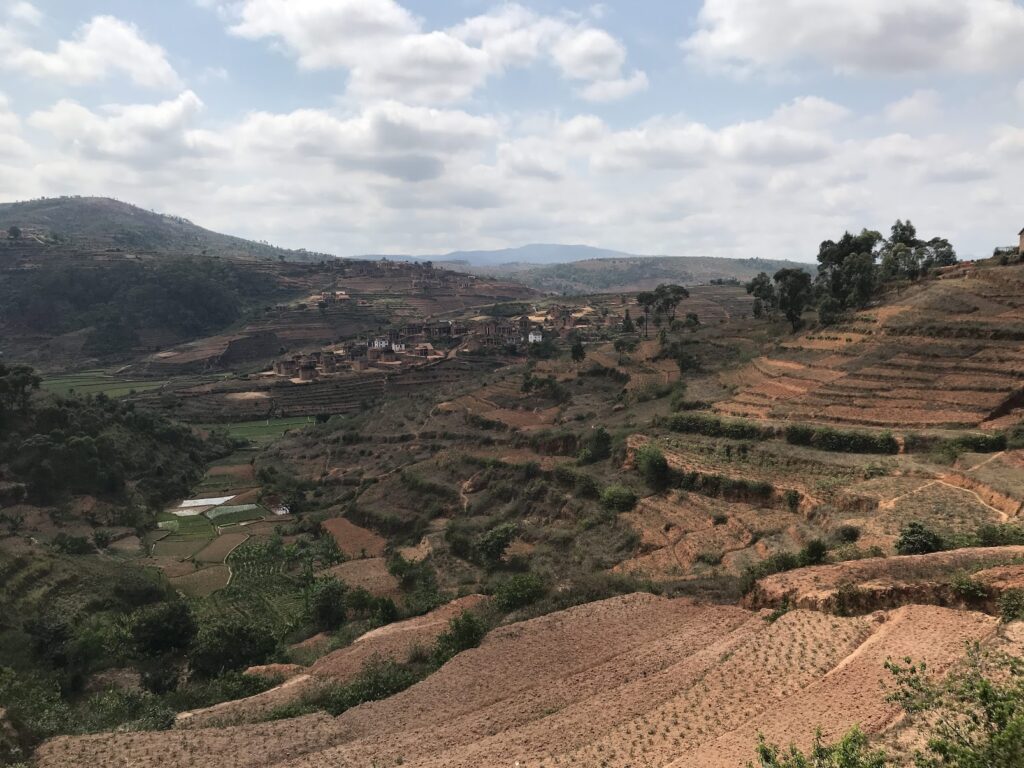
Going this way is less than the cost of how we did it (we think). Car/driver €70 + accommodations (B&B) €30 + park entrance fees and local guide fees + Tsiribihina Boat Cruise = €100 + park/guide fees per day + Tsiribihina Boat Cruise. It is logistically challenging to do this all on your own but we suspect it is a little cheaper. We would get our driver/guide to sort some details out when we arrive in Madagascar. So next time we will probably do it that way.
When to go?
Picking when to go is always a challenge. When works for you vs when is the best time is always the compromise. July and August is the peak season with the coolest temperatures. September to November is high season with the least rain. May to June is also a high season but you may get some rains in the beginning. December to April is low season as it is the rainy season and also the possibility of cyclones. In high and peak seasons you can expect more expensive accommodations and less vacancy. If you plan for a July/August visit you should book early. If you decide to go in low season, expect that there are some places you cannot go. Some roads are flooded and so you cannot get to some places. After lots of research we figured October and November are the best time for us and for Madagascar.
Where to go?
Picking where to go in Madagascar is the next challenge. We did a loop through the central part of the country (east, west and a little south). We did not go north or south. Here was our route:
Some of the factors to consider include:
- Wildlife – What do you want to see? There are over 100 types of lemurs (lemurs are only in Madagascar). Figure out which ones you want to see and that will probably tell you where to go. Other wildlife to check out are whales (when and where), chameleons, crocodiles, birds, bugs, fossa, etc. We saw 21 species of lemurs but no whales.
- Nature – Apart from the wildlife, the nature in Madagascar is unbelievable. There are 7 types of baobabs in Madagascar (only one type not in Madagascar); we saw three. The beaches in Madagascar can be phenomenal. We went on the west coast but there are some in the north and south. We went to four national parks (Tsingy, Isalo, Ranomafana, and Andasibe). There are also many nature reserves. Figure out what you want to see and in which parks/reserves, that will help determine where to go. One of the big issues in Madagascar is that the people are burning forests to create more farmland. Madagascar used to be 80% primary forest but now is only about 20% primary forest.

- Adventure – What do you want to do? First of all, driving the roads is quite an adventure itself. Research which roads you want to experience and which ones you do not. We were on National Roads 2, 7, 8, 9, 34 and 43. National Road 5 is supposed to be the craziest one however it may be one that not every company will do. The coastal road is another one worth experiencing. Driving on sand dunes can be an experience. We also went snorkelling, hiking Big Tsingy (with climbing gear), boat trip on the Tsiribinha River, hiking, swimming in waterfalls, beach bumming, and more. We did not get to go whale watching.
- People – There are 18 ethnic groups in Madagascar and 18 different dialects of the Malagasy language. There are also the Mikea (bushmen) but don’t expect to see them as they are very reclusive. While Madagascar is a very poor country, people in the villages are extremely friendly and seem genuinely happy to see Vasas (foreigners). The kids will want to hold your hand and walk around with you. People sustain themselves by farming and fishing mainly. The zebu (like beef) is amazing but the chicken is not very meaty. On the coasts, enjoy the wonderful seafood. And of course, the fruits and vegetables are so great and cheap. Rice is a main staple of their diet. Spending money in Madagascar helps their economy and their survival. However, I do not recommend giving money to people, especially the kids as it will cause them not to go to school. A low percentage of kids in villages go to school. To go to school parents must pay every month and not many can afford it. Kids are often required to work the farms, rice fields, manage the zebu, etc. Wherever you go in Madagascar you will likely get to interact with Malagasy people.
Why should you go?
Like I said, travelling to Madagascar is not for everyone. However, if you like to visit places that are more natural and not fully developed yet, then Madagascar should be on your list. If you want to see lemurs and baobabs, and other types of nature that you cannot see anywhere else in the world, then Madagascar should be on your list. If you are good with some more authentic and less commercial experiences then Madagascar should be on your list. If you want your travel spending to genuinely help the people and the economy then you should go to Madagascar. If you want meet some of the nicest people we have ever met then you should go.

If you decide you want to go, please feel free to contact me and I would be happy to share more with you. I would highly recommend our driver/guide. I can share his contact info with you.


